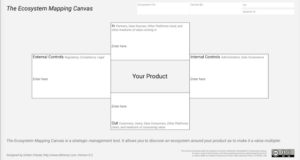In the ever-evolving landscape of product management, the ability to design products with simple and intuitive interfaces has become crucial. As a product manager, you strive to create delightful user experiences that make decision-making seamless for your target audience. One principle that can greatly assist you in this endeavor is Hick’s Law, which states that the time it takes to make a decision increases with the number and complexity of choices. Understanding and leveraging this law can significantly enhance your product’s usability and drive user satisfaction. In this article, we will explore Hick’s Law in detail and discuss how you can apply it to simplify decision-making for your users.
The Essence of Hick’s Law
Named after British psychologist William Edmund Hick, Hick’s Law reveals a fundamental relationship between the number of choices presented to a person and the time it takes them to make a decision. In simple terms, the more options or complex choices users encounter, the longer it takes for them to decide. This concept can be applied to various aspects of product design, ranging from navigation menus and feature sets to form fields and decision flows.
Streamlining Decision-Making for Your Users
- Reducing Cognitive Load: Hick’s Law emphasizes the importance of minimizing cognitive load for users. When faced with a multitude of choices, users are likely to feel overwhelmed, leading to decision paralysis or dissatisfaction. As a product manager, your goal should be to declutter the decision-making process by offering a limited number of relevant options. Focus on presenting users with only the essential choices that align with their goals and minimize distractions. This approach ensures a more streamlined decision-making experience.
- Prioritizing User Research: To effectively apply Hick’s Law, it’s crucial to understand your users’ needs, preferences, and pain points. Conduct comprehensive user research to identify the most common decision points within your product. By gaining insights into the decisions users frequently encounter, you can refine and optimize those areas to minimize complexity. This user-centric approach not only aligns with Hick’s Law but also cultivates a deeper understanding of your target audience.
- Utilizing Progressive Disclosure: Progressive disclosure is a design technique that gradually reveals information or options to users, reducing complexity and decision-making time. By initially presenting only the most critical choices and allowing users to access additional options when needed, you can simplify the decision process. Utilize techniques like accordions, tooltips, or expandable menus to progressively disclose information, thereby reducing the cognitive load on users.
- Clear and Concise Communication: Hick’s Law reminds us of the significance of clear communication in decision-making. Ambiguous or poorly worded options can confuse users, impeding their ability to make informed choices efficiently. As a product manager, ensure that your product’s interfaces and interactions use concise and understandable language. Clearly communicate the benefits and consequences associated with each choice, empowering users to make confident decisions.
- Iterative Design and User Feedback: Hick’s Law is not a one-time solution but an ongoing principle that requires continuous iteration and refinement. Incorporate user feedback into your design process to identify pain points and areas of complexity. By actively listening to your users, you can fine-tune your product’s decision flows, reducing the time it takes for users to make choices. Regular usability testing and user feedback sessions will prove invaluable in this regard.
Hick’s Law offers a valuable perspective for product managers seeking to create products with simplified and intuitive interfaces. By understanding the relationship between the number of choices and decision-making time, you can optimize your product’s design to minimize complexity and cognitive load on users. Prioritizing user research, utilizing progressive disclosure, maintaining clear communication, and embracing iterative design are all key strategies to leverage Hick’s Law effectively. By doing so, you can enhance the usability of your product, improve user satisfaction, and ultimately drive better outcomes.
As a product manager, it’s essential to remember that simplicity and ease of decision-making are closely intertwined. By applying Hick’s Law, you can reduce the cognitive burden on users and create a more intuitive and enjoyable experience. However, it’s important to strike a balance between offering enough choices to meet users’ needs and overwhelming them with an excessive number of options. Finding that sweet spot requires a deep understanding of your target audience and their specific decision-making context.
Furthermore, it’s worth noting that Hick’s Law is just one tool in your arsenal for designing exceptional user experiences. It should be complemented by other user-centric design principles and best practices. For instance, combining Hick’s Law with the concept of affordances, which refers to the perceived functionalities and actions that users associate with interface elements, can further simplify decision-making. By designing interfaces that provide clear cues and visual indicators, users can quickly grasp their available options.
Moreover, Hick’s Law should be considered in conjunction with other psychological principles and user behavior patterns. For example, A/B testing can help validate the impact of different design choices on decision-making time. By conducting experiments and analyzing user behavior metrics, you can gain insights into how changes in the number and complexity of choices influence user interactions and conversions.
Lastly, as technology continues to evolve, so do user expectations. It’s crucial to stay abreast of emerging trends and adapt your design approach accordingly. Keep an eye on industry research, attend conferences, and engage with the product management community to remain informed about the latest insights and strategies for creating intuitive user experiences.
Conclusion
In conclusion, Hick’s Law provides a valuable framework for product managers to simplify decision-making in their products. By understanding the relationship between the number and complexity of choices and the time it takes for users to make decisions, you can design products with simpler and more intuitive interfaces. Remember to prioritize user research, utilize progressive disclosure, maintain clear communication, iterate based on user feedback, and consider other design principles to create exceptional user experiences. By embracing Hick’s Law and applying user-centric design principles, you can delight your users, drive better product adoption, and ultimately achieve business success.
Cover pic generated on DALL-E 2.



